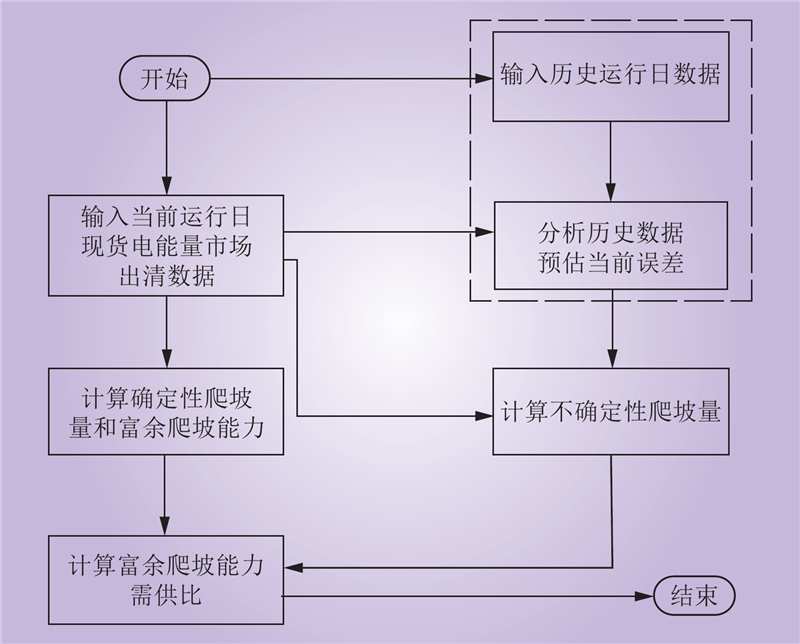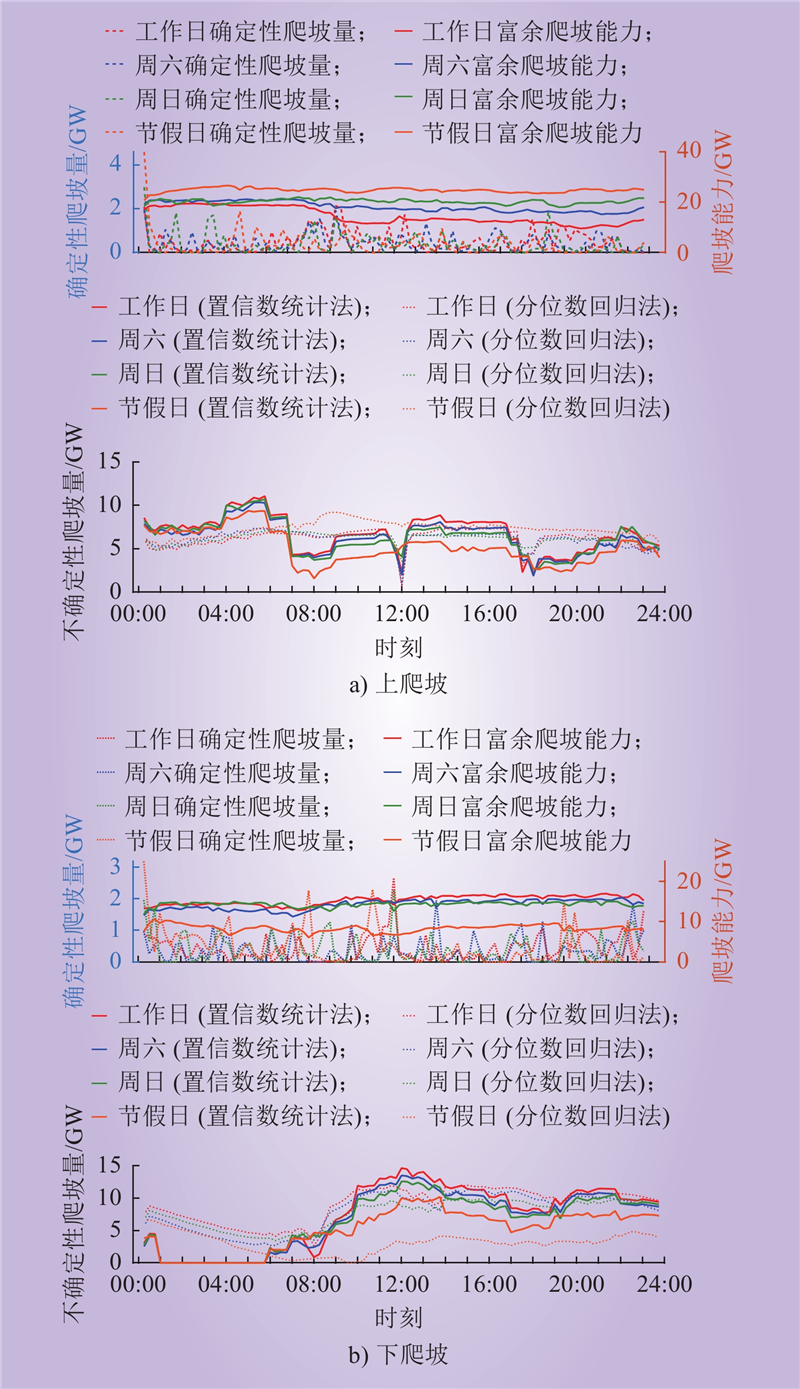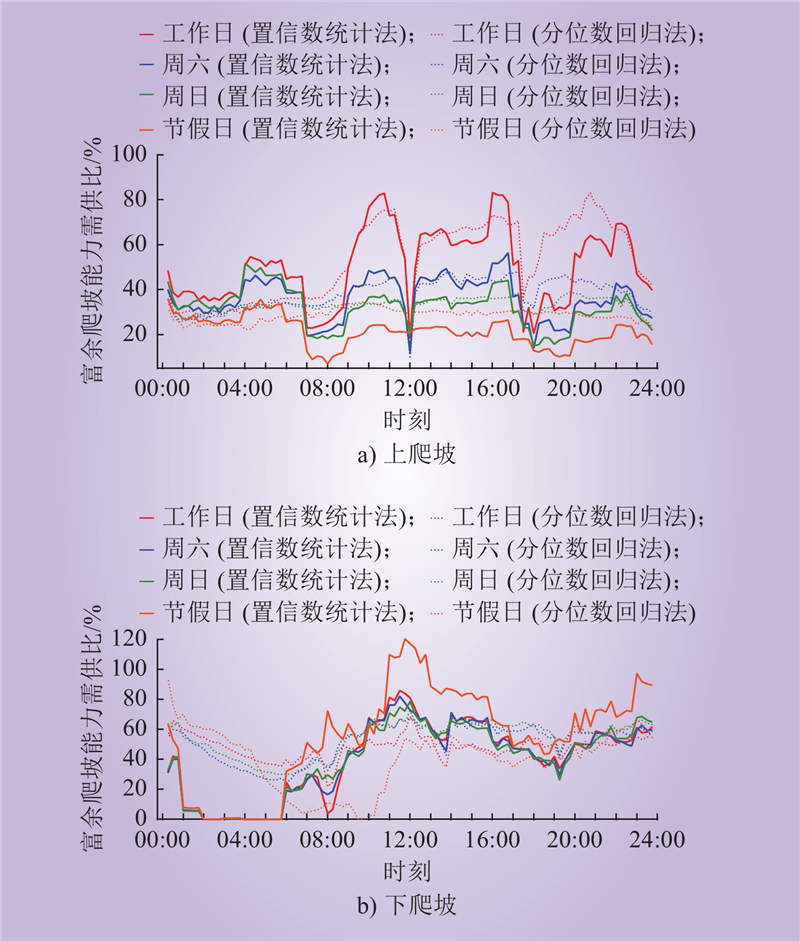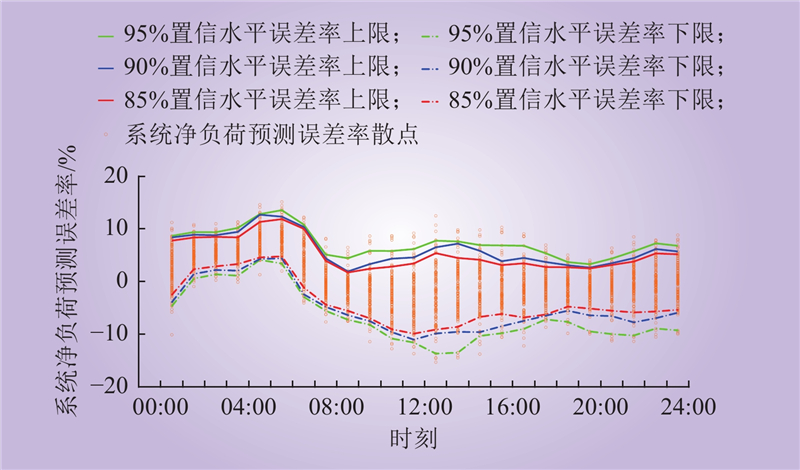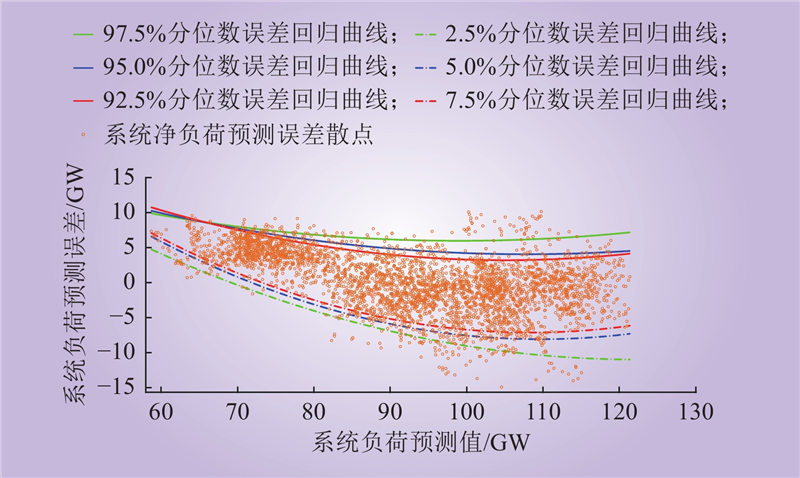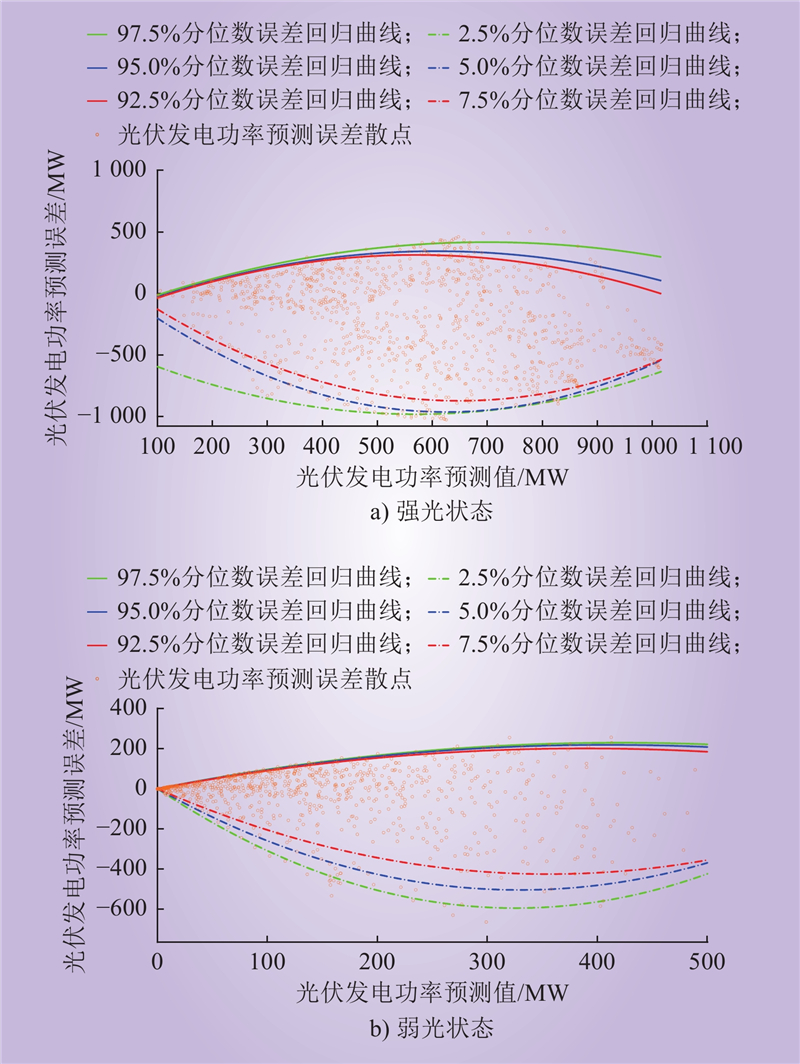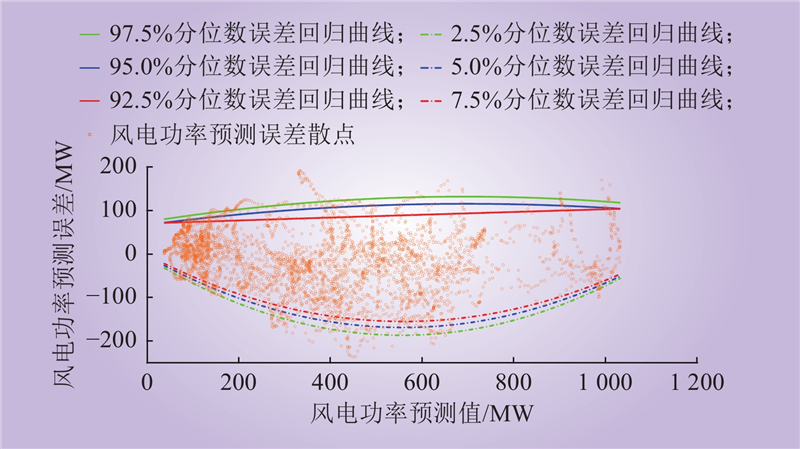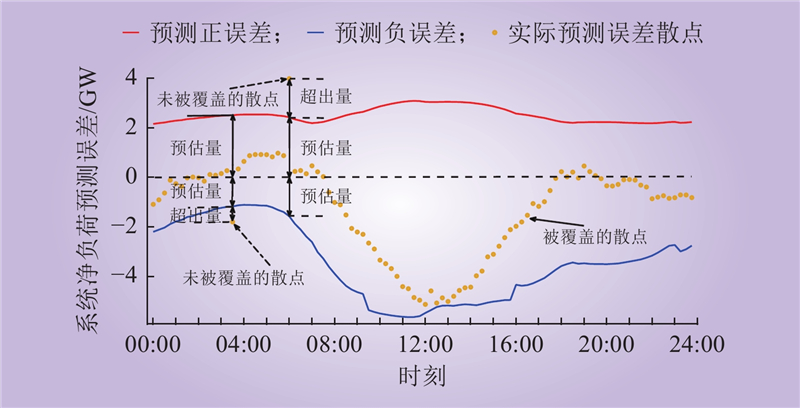| 1 |
张智刚, 康重庆. 碳中和目标下构建新型电力系统的挑战与展望[J]. 中国电机工程学报, 2022, 42 (8): 2806- 2819.
|
|
ZHANG Zhigang, KANG Chongqing. Challenges and prospects for constructing the new-type power system towards a carbon neutrality future[J]. Proceedings of the CSEE, 2022, 42 (8): 2806- 2819.
|
| 2 |
任大伟, 肖晋宇, 侯金鸣, 等. 计及多种灵活性约束和基于时序模拟的广域电力系统源-网-储协同规划方法[J]. 中国电力, 2022, 55 (1): 55- 63.
|
|
REN Dawei, XIAO Jinyu, HOU Jinming, et al. Wide-area power system generation-transmission-storage coordinated planning method based on multiple flexibility constraints and time-series simulation[J]. Electric Power, 2022, 55 (1): 55- 63.
|
| 3 |
国家市场监督管理总局, 国家标准化管理委员会. 电力系统技术导则: GB/T 38969—2020[S].
|
| 4 |
吴思嘉, 迟方德, 叶希, 等. 高比例新能源电网运行备用容量需求概率动态评估方法[J]. 电力建设, 2023, 44 (6): 126- 134.
|
|
WU Sijia, CHI Fangde, YE Xi, et al. Probabilistic dynamic assessment for operating reserve requirements of power system with high penetrated renewables[J]. Electric Power Construction, 2023, 44 (6): 126- 134.
|
| 5 |
杨策, 孙伟卿, 韩冬. 考虑新能源消纳能力的电力系统灵活性评估方法[J]. 电网技术, 2023, 47 (1): 338- 349.
|
|
YANG Ce, SUN Weiqing, HAN Dong. Power system flexibility evaluation considering renewable energy accommodation[J]. Power System Technology, 2023, 47 (1): 338- 349.
|
| 6 |
马静洁, 张少华, 李雪, 等. 发电系统充裕度与灵活性的随机评估[J]. 电网技术, 2019, 43 (11): 3867- 3874.
|
|
MA Jingjie, ZHANG Shaohua, LI Xue, et al. Stochastic assessment of adequacy and flexibility of power generation systems[J]. Power System Technology, 2019, 43 (11): 3867- 3874.
|
| 7 |
刘忠义, 何平, 宣文博, 等. 面向可再生能源并网系统的灵活性评估方法[J]. 电力系统及其自动化学报, 2020, 32 (11): 95- 101.
|
|
LIU Zhongyi, HE Ping, XUAN Wenbo, et al. Flexibility evaluation method for power system towards grid-connected renewable energy[J]. Proceedings of the CSU-EPSA, 2020, 32 (11): 95- 101.
|
| 8 |
刘立阳, 吴军基, 孟绍良. 短期风电功率预测误差分布研究[J]. 电力系统保护与控制, 2013, 41 (12): 65- 70.
|
|
LIU Liyang, WU Junji, MENG Shaoliang. Research on error distribution of short-term wind power prediction[J]. Power System Protection and Control, 2013, 41 (12): 65- 70.
|
| 9 |
王松岩, 李碧君, 于继来, 等. 风速与风电功率预测误差概率分布的时变特性分析[J]. 电网技术, 2013, 37 (4): 967- 973.
|
|
WANG Songyan, LI Bijun, YU Jilai, et al. Analysis on time-varying characteristics of probability error in forecast of wind speed and wind power[J]. Power System Technology, 2013, 37 (4): 967- 973.
|
| 10 |
刘斌, 周京阳, 周海明, 等. 一种改进的风电功率预测误差分布模型[J]. 华东电力, 2012, 40 (2): 286- 291.
|
|
LIU Bin, ZHOU Jingyang, ZHOU Haiming, et al. An improved model for wind power forecast error distribution[J]. East China Electric Power, 2012, 40 (2): 286- 291.
|
| 11 |
杨茂, 杜刚. 基于t Location-Scale分布的风电功率概率预测研究[J]. 中国电力, 2017, 50 (1): 140- 145.
|
|
YANG Mao, DU Gang. Wind power probability prediction based on t location-scale distrubution[J]. Electric Power, 2017, 50 (1): 140- 145.
|
| 12 |
BRUNINX K, DELARUE E. A statistical description of the error on wind power forecasts for probabilistic reserve sizing[J]. IEEE Transactions on Sustainable Energy, 2014, 5 (3): 995- 1002.
DOI
|
| 13 |
杨茂, 董骏城. 基于混合高斯分布的风电功率实时预测误差分析[J]. 太阳能学报, 2016, 37 (6): 1594- 1602.
DOI
|
|
YANG Mao, DONG Juncheng. Real-time prediction error analysis of wind power based on mixed Gaussian distribution model[J]. Acta Energiae Solaris Sinica, 2016, 37 (6): 1594- 1602.
DOI
|
| 14 |
马伟, 谢丽蓉, 马兰, 等. 短期风电功率预测误差及出力波动的概率建模[J]. 太阳能学报, 2023, 44 (11): 361- 366.
DOI
|
|
MA Wei, XIE Lirong, MA Lan, et al. Probabilistic modeling of short-term wind power prediction errors and output fluctuations[J]. Acta Energiae Solaris Sinica, 2023, 44 (11): 361- 366.
DOI
|
| 15 |
张金环, 王超群, 张彤, 等. 基于高斯混合分布模型的风电功率预测误差统计分析研究[J]. 智慧电力, 2020, 48 (7): 59- 64, 72.
|
|
ZHANG Jinhuan, WANG Chaoqun, ZHANG Tong, et al. Statistical analysis of wind power forecasting errors based on Gaussian mixture model[J]. Smart Power, 2020, 48 (7): 59- 64, 72.
|
| 16 |
李海波, 鲁宗相, 乔颖, 等. 大规模风电并网的电力系统运行灵活性评估[J]. 电网技术, 2015, 39 (6): 1672- 1678.
|
|
LI Haibo, LU Zongxiang, QIAO Ying, et al. Assessment on operational flexibility of power grid with grid-connected large-scale wind farms[J]. Power System Technology, 2015, 39 (6): 1672- 1678.
|
| 17 |
BLUDSZUWEIT H, DOMINGUEZ-NAVARRO J A, LLOMBART A. Statistical analysis of wind power forecast error[J]. IEEE Transactions on Power Systems, 2008, 23 (3): 983- 991.
DOI
|
| 18 |
WANG Y, NIE R, CHI P, et al. A novel fractional structural adaptive grey Chebyshev polynomial Bernoulli model and its application in forecasting renewable energy production of China[J]. Expert Systems with Applications, 2022, 210, 118500.
DOI
|
| 19 |
DONG Y C, ZHANG H L, WANG C, et al. A novel hybrid model based on Bernstein polynomial with mixture of Gaussians for wind power forecasting[J]. Applied Energy, 2021, 286, 116545.
DOI
|
| 20 |
CAISO. Flexible ramping product: draft final technical appendix[R]. California: CAISO, 2016.
|
| 21 |
CAISO. Business requirements specification: flexible ramp product requirement enhancements[R]. California: CAISO, 2022.
|
| 22 |
魏利屾, 冯宇昂, 方家琨, 等. 现货市场环境下新能源并网接入对市场出清的影响[J]. 上海交通大学学报, 2021, 55 (12): 1631- 1639.
|
|
WEI Lishen, FENG Yuang, FANG Jiakun, et al. Impact of renewable energy integration on market-clearing results in spot market environment[J]. Journal of Shanghai Jiao Tong University, 2021, 55 (12): 1631- 1639.
|
| 23 |
彭超逸, 顾慧杰, 朱文, 等. 交直流混联区域电网现货市场出清模型研究[J]. 电网技术, 2020, 44 (1): 323- 331.
|
|
PENG Chaoyi, GU Huijie, ZHU Wen, et al. Study on spot market clearing model of regional power grid considering AC/DC hybrid connection[J]. Power System Technology, 2020, 44 (1): 323- 331.
|
| 24 |
亢丽君, 王蓓蓓, 薛必克, 等. 计及爬坡场景覆盖的高比例新能源电网平衡策略研究[J]. 电工技术学报, 2022, 37 (13): 3275- 3288.
|
|
KANG Lijun, WANG Beibei, XUE Bike, et al. Research on the balance strategy for power grid with high proportion renewable energy considering the ramping scenario coverage[J]. Transactions of China Electrotechnical Society, 2022, 37 (13): 3275- 3288.
|
| 25 |
李雄威, 王昕, 顾佳伟, 等. 考虑火电深度调峰的风光火储系统日前优化调度[J]. 中国电力, 2023, 56 (1): 1- 7, 48.
|
|
LI Xiongwei, WANG Xin, GU Jiawei, et al. Day-ahead optimal dispatching of wind-solar-thermal power storage system considering deep peak shaving of thermal power[J]. Electric Power, 2023, 56 (1): 1- 7, 48.
|


